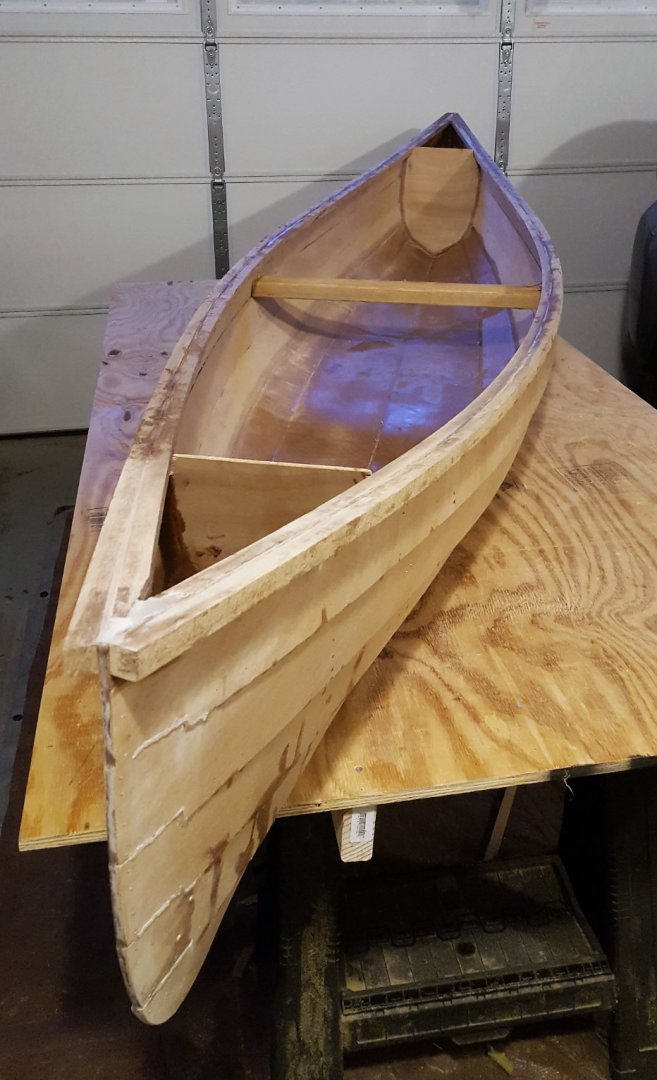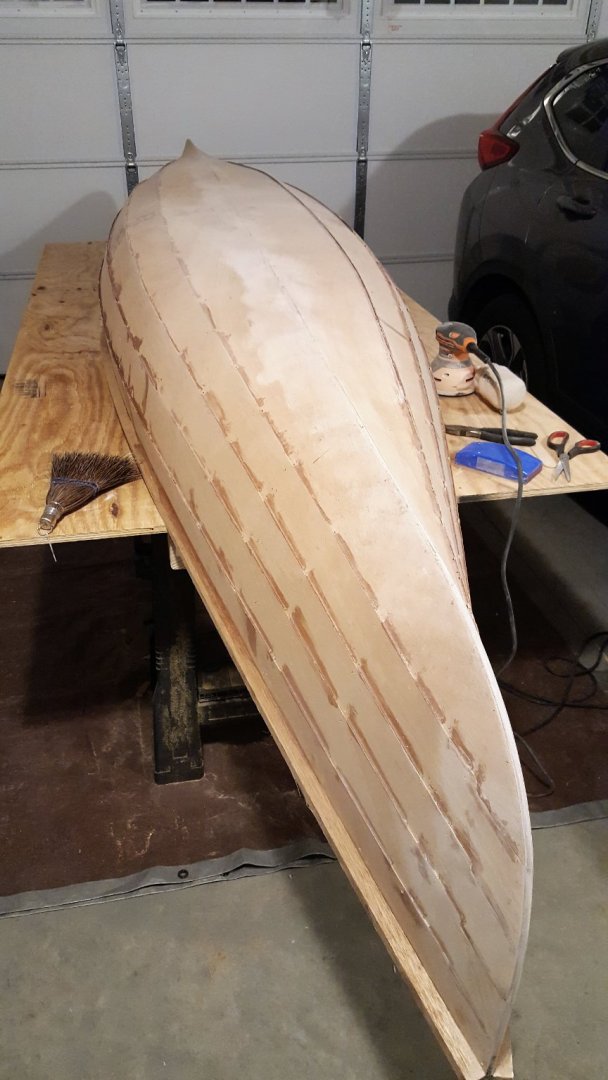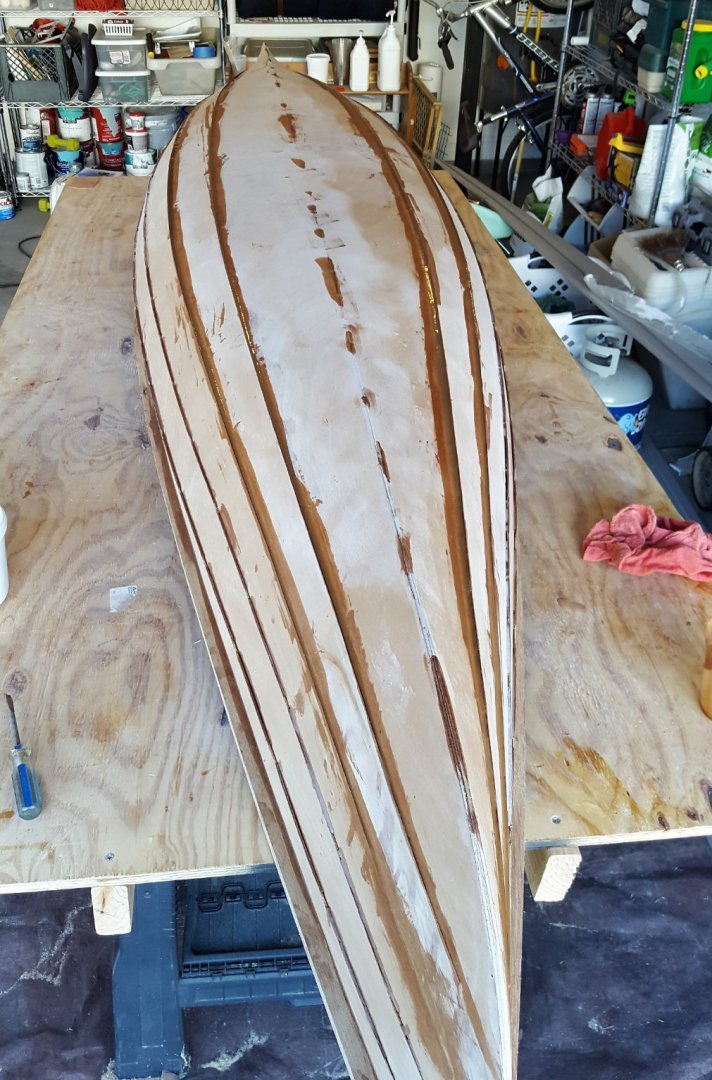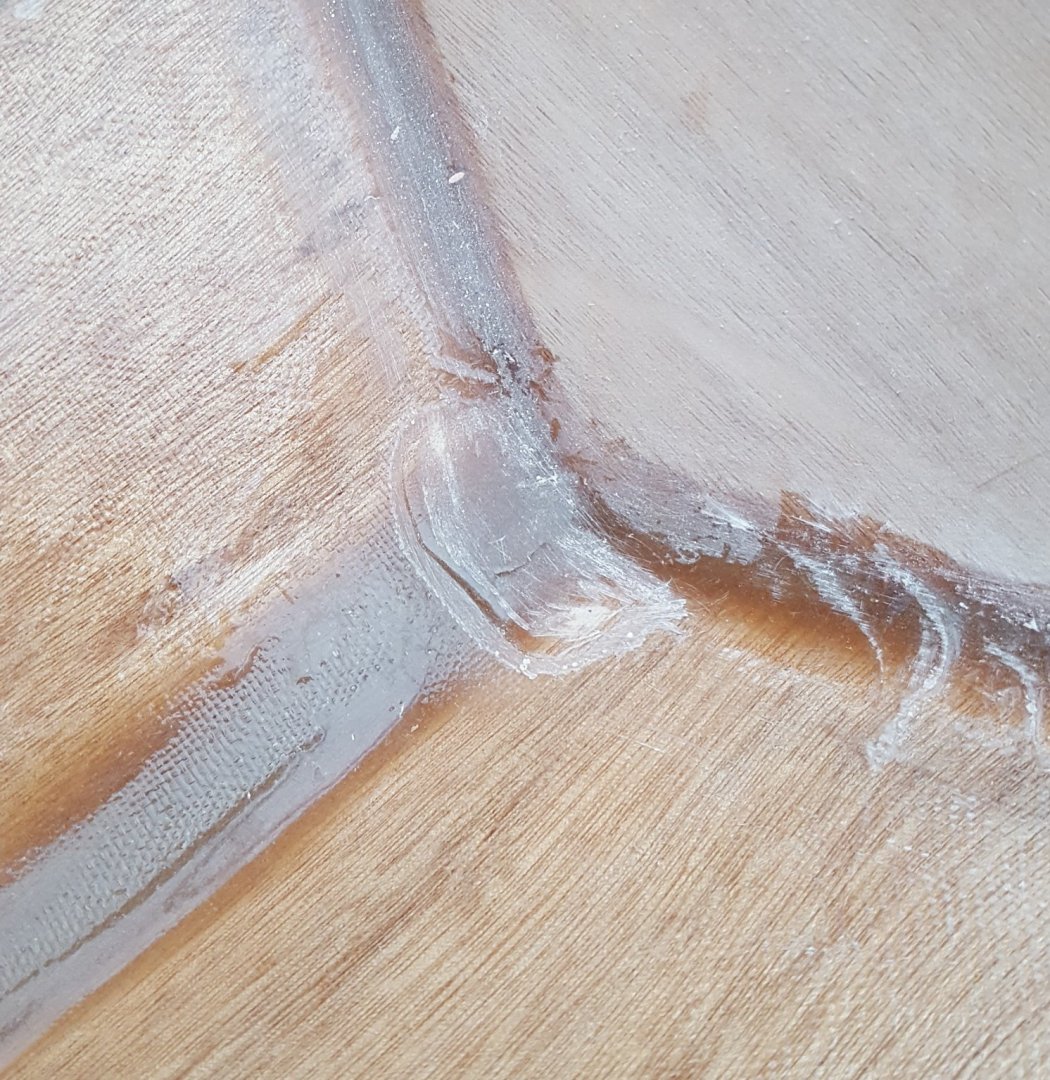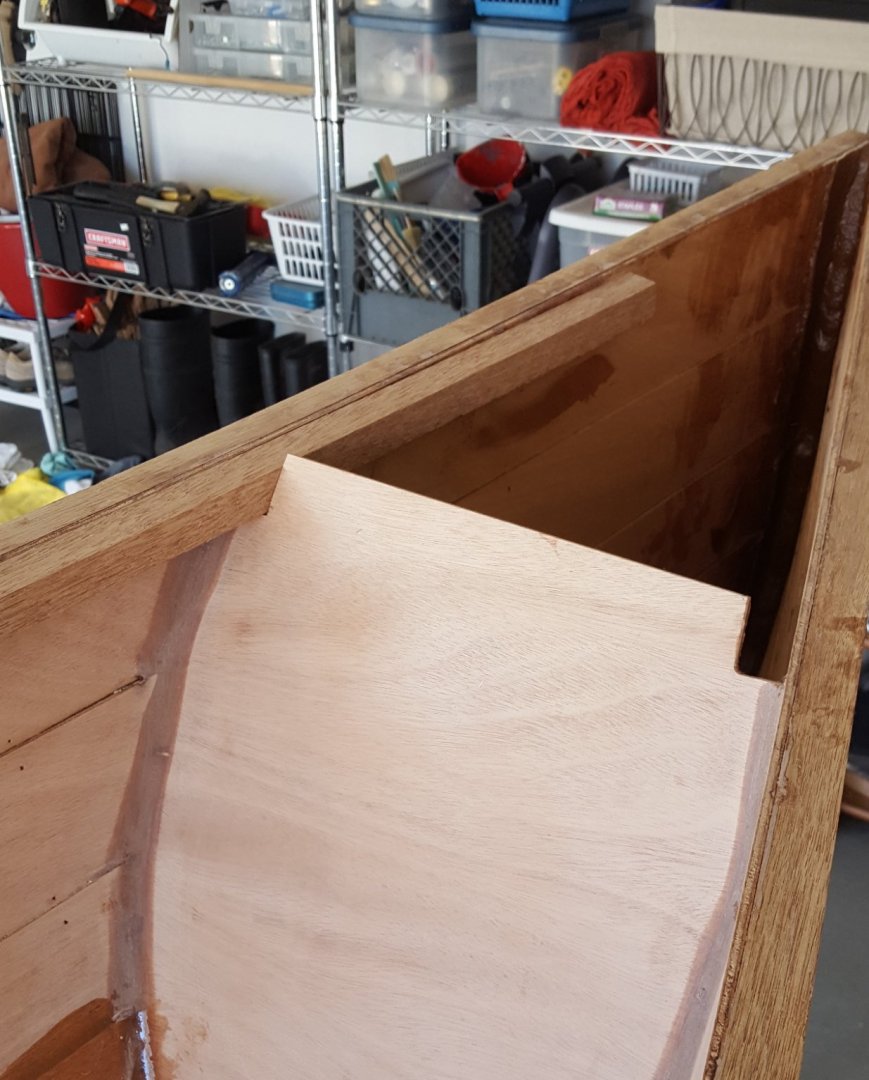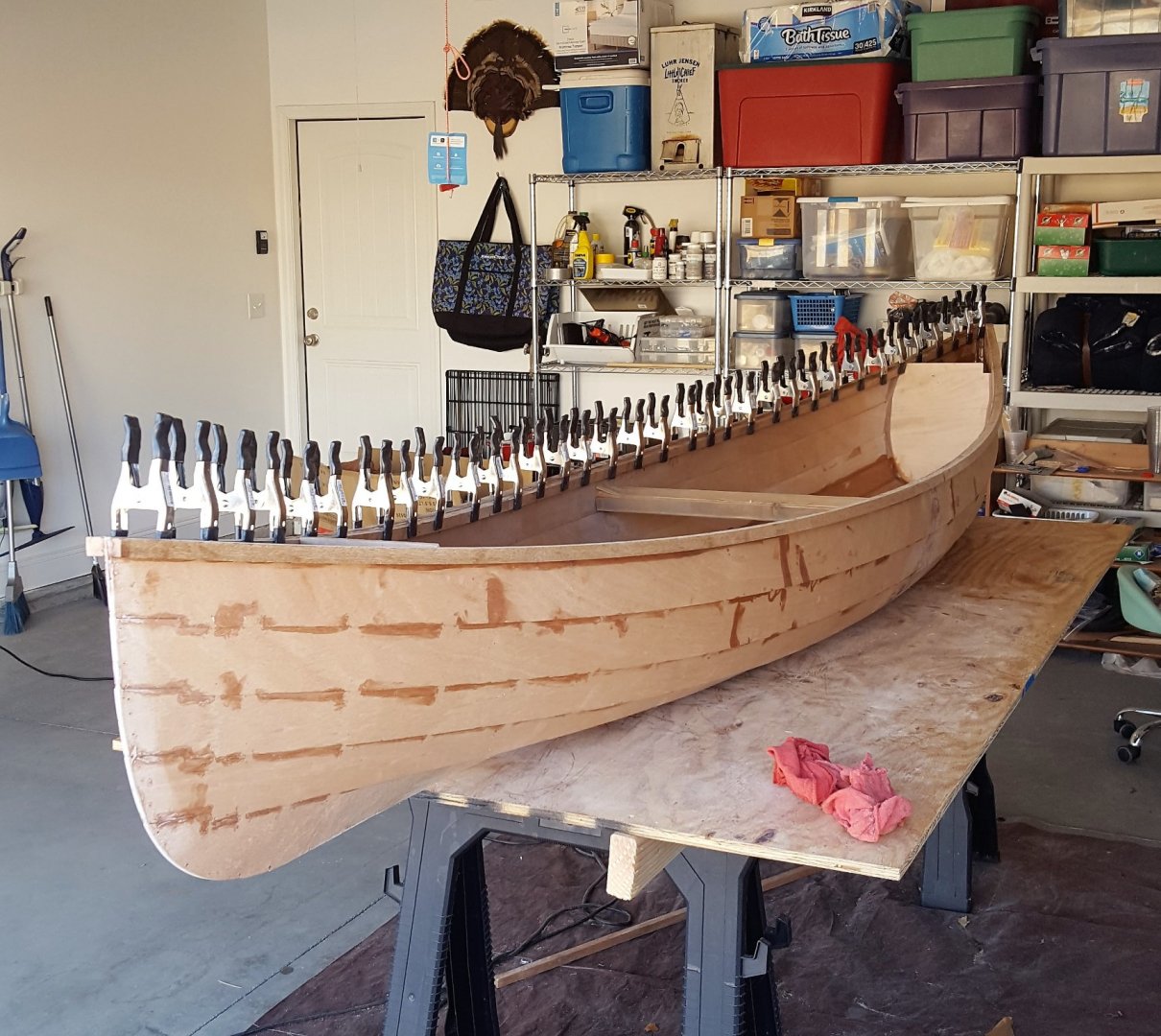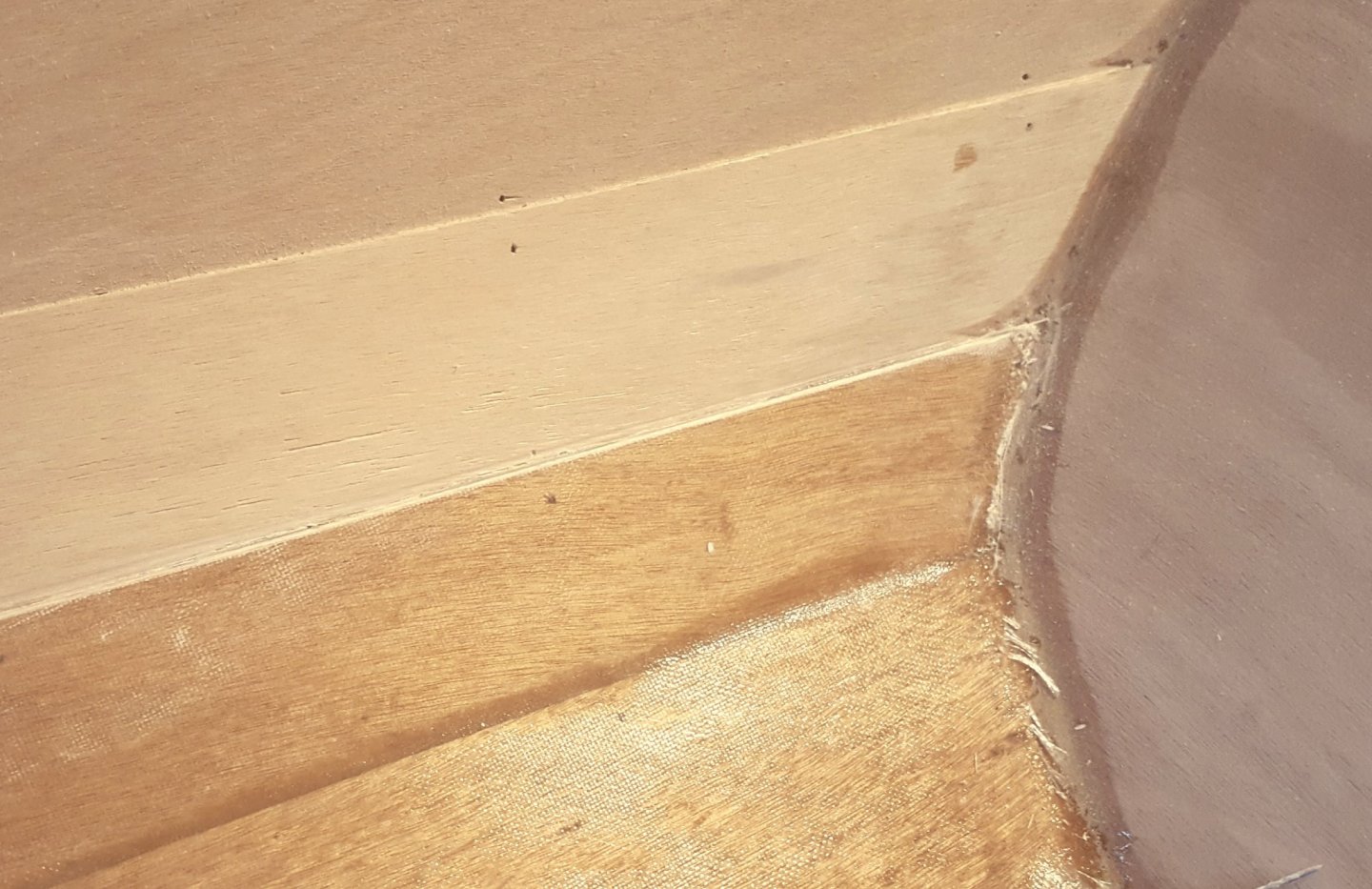-
Posts
10,350 -
Joined
-
Last visited
Content Type
Profiles
Forums
Gallery
Events
Everything posted by ccoyle
-
More progress. The second rail was added -- had a bear of a time installing it by myself. Ruined a t-shirt in the process when the epoxy-slathered 1x1 sprang back on me -- TWICE. Now I have a dedicated epoxy-work shirt. 🙄 The manual recommends using a Japanese pull saw to make a neat joint where the rails meet. I don't have a pull saw and am not going to buy one just for one project, so I made the joint as best I could with a regular hand saw and then filled in the gaps with thickened epoxy. It was then time to flip the project over and continue work on the outside in preparation for the exterior fiberglass. First, some sanding to take down globs of epoxy on the panels that will be fiberglassed. Next, all of the exterior seams need to be filled in. The panels were tack-welded during the initial construction phase. Here, four seams are done, along with the spots along the keel that needed to be filled in. After this bit of work, which required two batches of epoxy, I ran out of gumption and good seeing light, so that was it for today. Four more seams to go, and that will be the last of the major seam work. Cheers!
-
One thing (well, two actually) about these kits from MarisStella is the doweling of the bulkheads, which should produce a rock-solid substructure and eliminate alignment issues (unless the laser cutting is ever off for some reason), as well as the number of bulkheads supplied. The kit appears to have about half again as many as one normally sees in a PoB kit.
- 286 replies
-
This was a very handsome class of ships -- looking forward to following your build. BTW, I removed "wood" from your list of tags. It's kind of the default medium for our site.
- 53 replies
-
- brig-sloop
- Caldercraft
-
(and 2 more)
Tagged with:
-
Welcome aboard, Henry! Ooh, that sounds like a Halinski product -- that's a real feat. We have a small cadre of card model enthusiasts within our ranks.
-
Hello, Al. I'm all for making improvements to instruction manuals, though I am not personally familiar with BlueJacket's manuals. My only comment, for whatever it's worth, is that 11 x 17 is on the large size; on my small desk that would take up about a quarter of the work space. Of course that might not be an issue with some or perhaps even most other builders.
-
You found them (see here)! I have not built any of WAK's kits, except if you consider some of the aircraft designed by Lech Kołodziejski that were previously published by CardPlane. I have, though, completed some ships by Digital Navy, Paper Shipwright, JSC, and Modelik -- I have a bunch of Paper Shipwright and HMV kits in my stash.
- 4 replies
-
- Dunquerque
- WAK
-
(and 1 more)
Tagged with:
-
On we go. This first photo shows one of my fiberglassing boo-boos. I trimmed away the excess cloth and sanded the sharp edges smooth. Now, as far as a repair goes, I'm thinking that perhaps the easiest thing to do would be to sand down the spot level with the surrounding fiberglass and then simply fill the divot with some thickened epoxy. Any thoughts on this? I don't think that there will be any structural issues with the few spots I need to patch -- as you can see, there's already an epoxy fillet beneath this particular spot. Next task was to finish sealing the interior of the bow and stern compartments -- or perhaps that's bow and bow compartments since both ends are identical at this point. Eventually I'll have to pick one end or the other as the bow. I didn't photograph this step, as it's quite messy, since the work has to be done at very awkward angles inside the cramped compartments. Then came the interior rub rails. First bit is to finish widening the pre-cut slots in the bulkheads. I intended to do both rails today, since I was able to dry fit the first one with only half of the clamps I have on hand. But of course once I got the rail slathered in epoxy, the stuff acted like a lubricant, meaning I had to use all of my clamps to get it to stay in place. There is a lot of tension on this poor piece of 1x1 until the epoxy sets -- notice I have my temporary spreader in place. So, that's it for at least another 24 hours.
-
Welcome, Dennis. The Amati Lady Nelson is a perfectly acceptable first model, as it has the "three nots" needed for beginners, i.e. not a lot of planking, not a lot of guns, and not a lot of rigging. The instructions should be pretty decent, and the designer -- Chris Watton -- is a member here. Also, there are a lot of finished cutter build logs and gallery entries for inspiration and tips. Cheers!
-
I have been using Rapid Fuse lately and really like it.
-
Welcome, and good work on your model! Flirt's designer, Chris Watton, is an active member here.
-
I got the seams cleaned up, but there were still bits of blue tape residue visible. I decided to epoxy the seams with a wood flour/epoxy mix. It hides the remaining residue and ultimately will strengthen the seam, so why not? I didn't take a picture of this step, because it's not particularly visually interesting. Once the epoxy sets, the next step will be adding the interior rub rails.
-
My messy fiberglass job has created a can load of extra work for myself, but I did manage to trim some more of the ragged edges today, and I also hit upon a workable method of tidying up the sharp edges and tape residue that are left over -- my Dremel tool skills have come in handy in this regard. This photo shows the cleaned-up edge I was able to get before it got too dim in my garage to continue working.
About us
Modelshipworld - Advancing Ship Modeling through Research
SSL Secured
Your security is important for us so this Website is SSL-Secured
NRG Mailing Address
Nautical Research Guild
237 South Lincoln Street
Westmont IL, 60559-1917
Model Ship World ® and the MSW logo are Registered Trademarks, and belong to the Nautical Research Guild (United States Patent and Trademark Office: No. 6,929,264 & No. 6,929,274, registered Dec. 20, 2022)
Helpful Links
About the NRG
If you enjoy building ship models that are historically accurate as well as beautiful, then The Nautical Research Guild (NRG) is just right for you.
The Guild is a non-profit educational organization whose mission is to “Advance Ship Modeling Through Research”. We provide support to our members in their efforts to raise the quality of their model ships.
The Nautical Research Guild has published our world-renowned quarterly magazine, The Nautical Research Journal, since 1955. The pages of the Journal are full of articles by accomplished ship modelers who show you how they create those exquisite details on their models, and by maritime historians who show you the correct details to build. The Journal is available in both print and digital editions. Go to the NRG web site (www.thenrg.org) to download a complimentary digital copy of the Journal. The NRG also publishes plan sets, books and compilations of back issues of the Journal and the former Ships in Scale and Model Ship Builder magazines.



